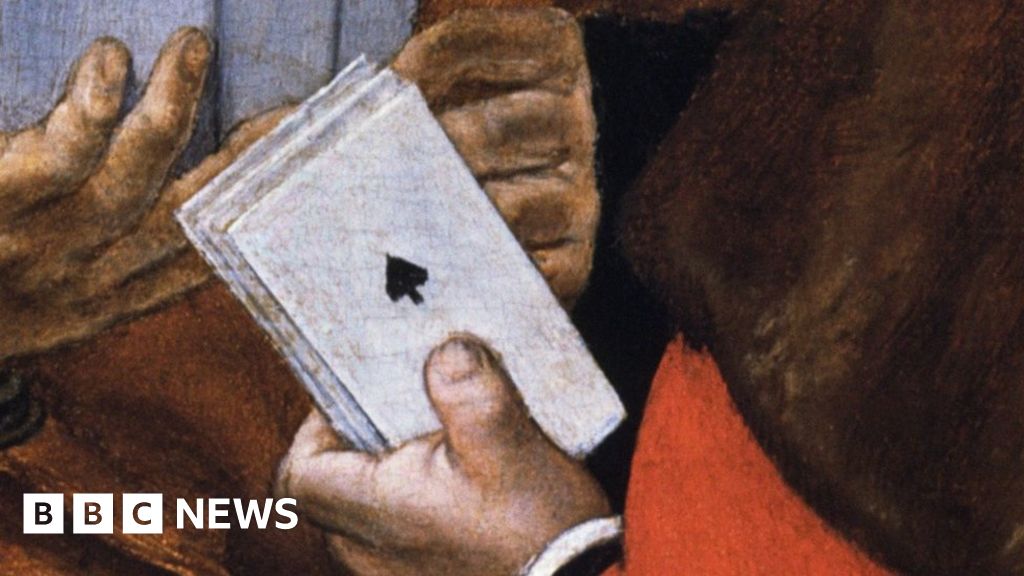But between 1588 and 1960 there was a tax on physical playing cards - and in 1765 a process was introduced to make sure all vendors and makers would stump up the duty.
Makers had to supply the tax office with paper to match their other cards, and the tax office - also known as the stamp office - would print the ace of spades using engraved metal plates, a printing technology that was expensive and not widely available.
The maker would then buy the printed aces from the stamp office - thereby paying the tax. In order to make it more difficult to forge these aces, more and more elaborate designs were used.
Richard Harding, a licensed card-maker with shops in Oxford Street and Grosvenor Square, carried on the manufacturing and selling of playing cards.
He did a roaring trade - but made very few demands of the stamp office.
A Mr John Hockey from the stamp office was put on the case. He started by buying six packs of playing cards from Harding’s business and finding all of the aces were forged.
Obviously not one to leave things to chance, he continued to repeat his purchases until he had 90 packs of playing cards. All the aces of spades were forgeries.
The habits of this man, with his apparently insatiable desire for packs of cards, must have roused the suspicions of Harding for when his businesses and home were raided - not one forgery was found.
The dogged men from the stamp office were not about to give up and some of Harding’s acquaintances were also paid a visit.
A Mr Skelton leased part of a building in his rear yard to Harding, where Harding would, in the words of the prosecution, “carry on his nefarious business”.
Mr Skelton denied any knowledge of Harding’s nefarious business. This, however, was cast into doubt when 2,000 aces of spades were found in his home.
More were found at his daughter’s house, hidden in a basket of “foul linen”.
Investigators also discovered, buried about a foot beneath the earth at the bottom of his yard, printing plates. In the privy, they found more.
They were for the aces of spades.
During the trial, John Hockey, the man who bought 90 packs of cards from Harding, told the Old Bailey he had paid the standard market rate - Harding wasn’t therefore getting away with shoddy copies by selling them cheap.
So how had he managed to print aces of spades convincing enough they didn’t raise the alarm with ordinary buyers?
It emerged he paid for an associate, a stone-seal engraver called Hugh Leadbetter, to take copper-engraving lessons.
…
Harding left his defence to his counsel, and called seven witnesses who gave him a good character.
Yet on 21 September 1805 he was found guilty and sentenced to death. Two months later, he was hanged.
His remains were at St George Hanover Square Burial Ground in Bayswater until 12 March 1969, when he - and others - were removed to Lambeth and cremated.


